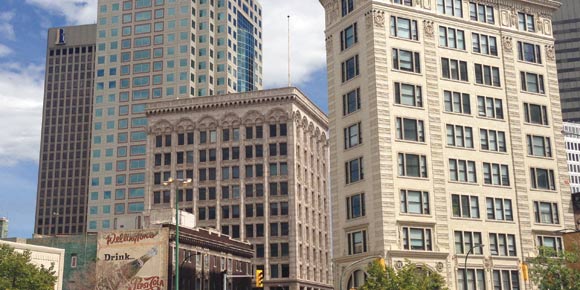By Stefano Grande
The provincial PC government is well into its first mandate and while many priorities are being tackled, such as reducing the deficit and improving health care, it is still yet to be determined if the Downtown is a priority.
We know that the physical face of our Downtown reflects on the state of our economy and the condition of our social fabric, and although many things have been accomplished over the years, more needs to happen. With that in mind, it is important to reiterate why the Downtown is important to Manitobans and why it needs to be a priority for government.
Economic prosperity
There is more compelling evidence today as to why downtowns matter to the economic prosperity of our province and city. From the simplest perspective, our Downtown is only 1% of the city size, yet generates an estimated 10% of all the provincial and city education/property taxes. The return on investment (ROI) is massive to taxpayers and shows that this relatively small area with so many infrastructures already in place is generating a whopping amount of wealth for our economy. Just imagine a goose laying the proverbial golden egg. Downtown is the golden goose that keeps on giving, so it needs to be nurtured.
The dense, compact forms of downtowns generate more taxes and as a result less operating costs per acre, which results in more efficient ways of providing public services. In other words, downtowns matter because our kids, future leaders, creators and workforces want to be in cities that have great downtowns with access to public services that work for them.
Building a better downtown
In a recent meeting with Provincial Ministers, the downtown business community shared our thoughts on two important elements that we need their help with. These elements will allow us to continue our efforts in building a better downtown.
1. Stimulate downtown development, strategically.
Continue making a priority to provide “market gap” tools, such as Tax Increment Financing, to stimulate downtown development. Without it, further downtown development will come to a grinding halt. Going forward we should target areas of market failure. It’s time to focus these limited tools:
• In strategic areas of our downtown
• In strategic buildings/lands that are empty and not generating any significant taxes, which is also holding back private sector investment
• On specific forms and types of buildings, ones that are more likely to lead to density and small business growth, in turn a stronger real estate market.
Underutilized and undervalued downtown properties surrounded by current city services will continue to do nothing to improve our downtown market, and do not lend to vibrancy. In order to see change, freeze taxes and grant the incremental taxes created by a new development, back to the redevelopment strategy, in turn increasing taxation values all around.
2. Social Intervention
Our community requires the support of government which will intervene in making significant changes to address serious social issues related to poverty and substance abuse. This includes:
• Undertaking significant system changes and approaches that are required to address harms related to substance abuse
• Listening to the community which is supportive of the Health and Safety Alliance, Harms Reduction Strategy. Our 1960s approach to dealing with substance abuse is no longer working and it is time for change.
• Implementing the plan to End Homelessness, a plan which has been developed by the community, through End Homelessness.
• Stop funding programs to help alleviate harms related substance abuse which are not working and re-direct funding to modern solutions, and partner with the private sector, which want to play a role.
These policies do not require new money but do require leadership in order to move in this direction.
Keep momentum going
Making our downtown a priority will require critical policy directions that keep the momentum going in creating a downtown where Manitobans are proud, young people are attracted too, outside investment is encouraged, and convention goers and tourists seek. Let’s keep the momentum going. It’s now time for the Province to lead on this file.
Stefano Grande is the CEO of Downtown Winnipeg BIZ



